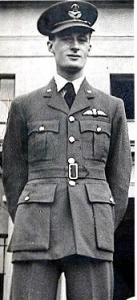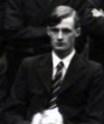
|

|
| Flying Officer Christopher Noel MAYNARD (67062) | |
|
80 Squadron, Royal Air Force Date of birth: 19th January 1921 Date of death: 10th May 1942 Killed on active service aged 21 Commemorated on the Alamein Memorial Panel 248 |

|
| Christopher Noel Maynard was born at Stratford-on-Avon on the 19th of January 1921 the son of Captain Frederick Harrison Maynard, Loyal North Lancashire Regiment, and Catherine Mary Noel (nee Etches) Maynard of Roborough in North Devon. He was educated at Ashcombe School, Dorking in Surrey and at Lancing College where he was in Seconds House from September 1934 to July 1939. He was in the Running Team from 1936 to 1939, being Secretary in 1938. He was appointed as a House Captain in 1939 and was a Sergeant of the Officer Training Corps where he achieved Certificate A. He was commissioned as a Pilot Officer in the Royal Air Force Volunteer Reserve on the 8th of May 1941 and was promoted to Flying Officer on the 8th of May 1942. He was posted to 80 Squadron which was operating in the Libyan Desert based at Gambut airfield. On the 3rd of May 1942 Christopher Maynard took off at 5.20pm in Hurricane Mk IIC BE712 for a squadron scramble to intercept an incoming enemy raid to the south of Gazala. As the Squadron was nearing Tobruk at around 5.50pm, and had sighted the enemy, the leader started to lead the formation in a turn to port. Christopher Maynard, who was flying on the port side, carried out the standard procedure for such a manoeuvre by lifting his aircraft and crossing over, above the lead aircraft. During the cross over the third aircraft in the formation was invisible to him and whilst looking down for his leader, the third member of the formation Sergeant Richard Henry Thomas, who was flying Hurricane Mk IIC BE360, collided with him. Richard Thomas made a crash landing in which he was seriously injured; he was taken to No. 186 Field Ambulance where he died from his injuries later that day. After the collision Christopher Maynard’s Hurricane began to spin out of control and he bailed out at a height of about 2,000 feet. He was injured and was picked up and admitted to No. 62 General Hospital at Tobruk suffering from contusions to his left ankle and to his right hip. He was evacuated from Tobruk on board the Hospital Ship HMS Aquileia, formerly the Italian Hospital Ship Ramb IV, which had been captured and renamed on the 10th of April 1941. As a hospital ship she had large red crosses painted on each side as well as on the decks fore and aft. At night she was lit from bow to stern. HMS Aquileia set sail from Tobruk at 2pm on the 9th of May 1942 and, although enemy aircraft were seen from time to time none troubled her during the first part of her journey. She travelled through the night on calm seas towards her destination of Alexandria. At around 7.30am on the morning of the 10th of May, when the ship was some twenty five miles off Alexandria, she was attacked and bombed by enemy aircraft, with the forward section being set ablaze. One hundred and fifty five passengers, most of who were South African wounded, and ten of the crew died in the attack from about three hundred and sixty men who were on board. The destroyers, HMS Kimberly, HMS Lively and HMS Jackal along with the mine sweepers HMS Derby and HMS Arrow picked up the survivors from the few lifeboats which had been able to launch before the ship was sunk by a Royal Navy warship. He is commemorated on the war memorial at Ashcombe School, Dorking. |
|
 | |
| Seconds House |
Back